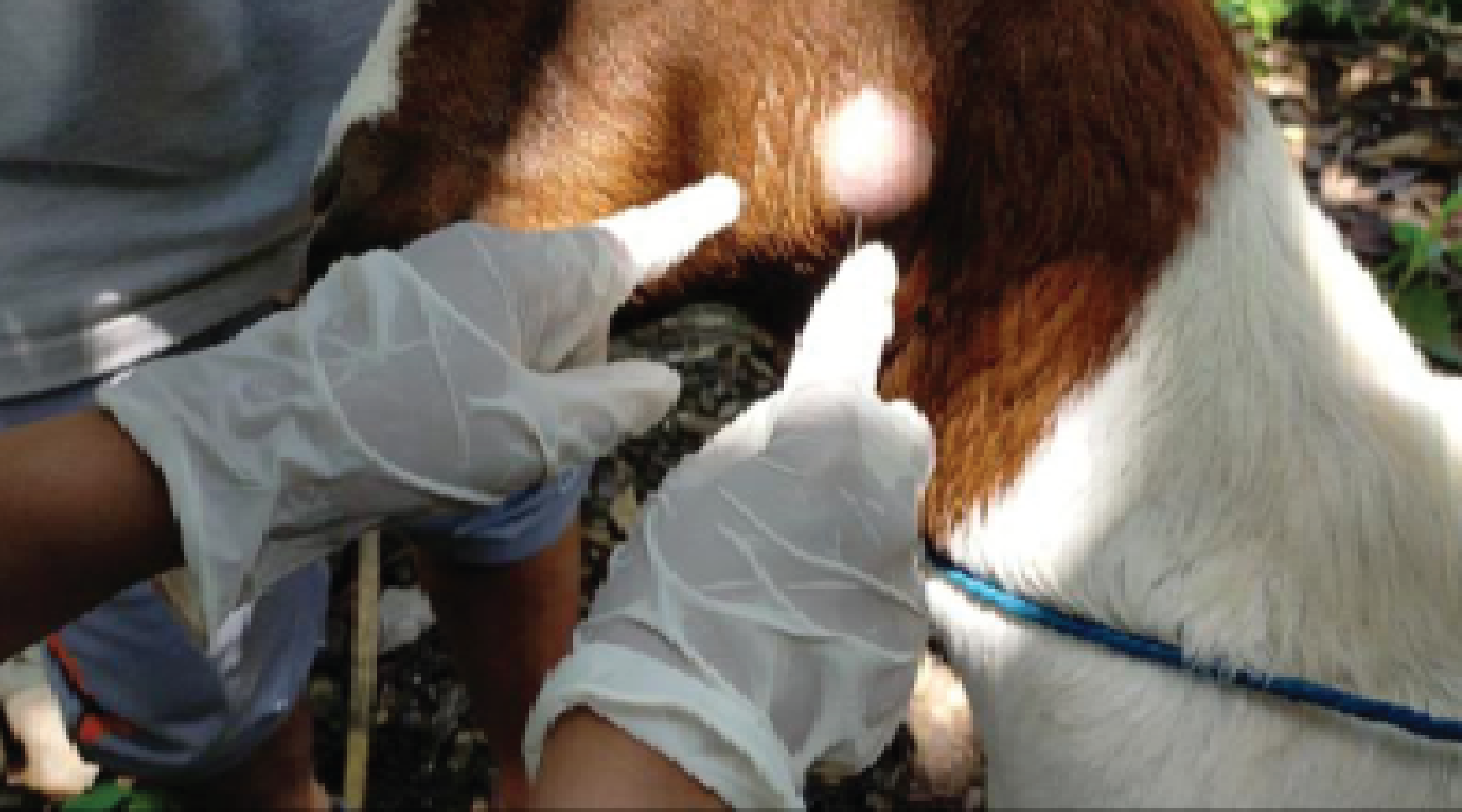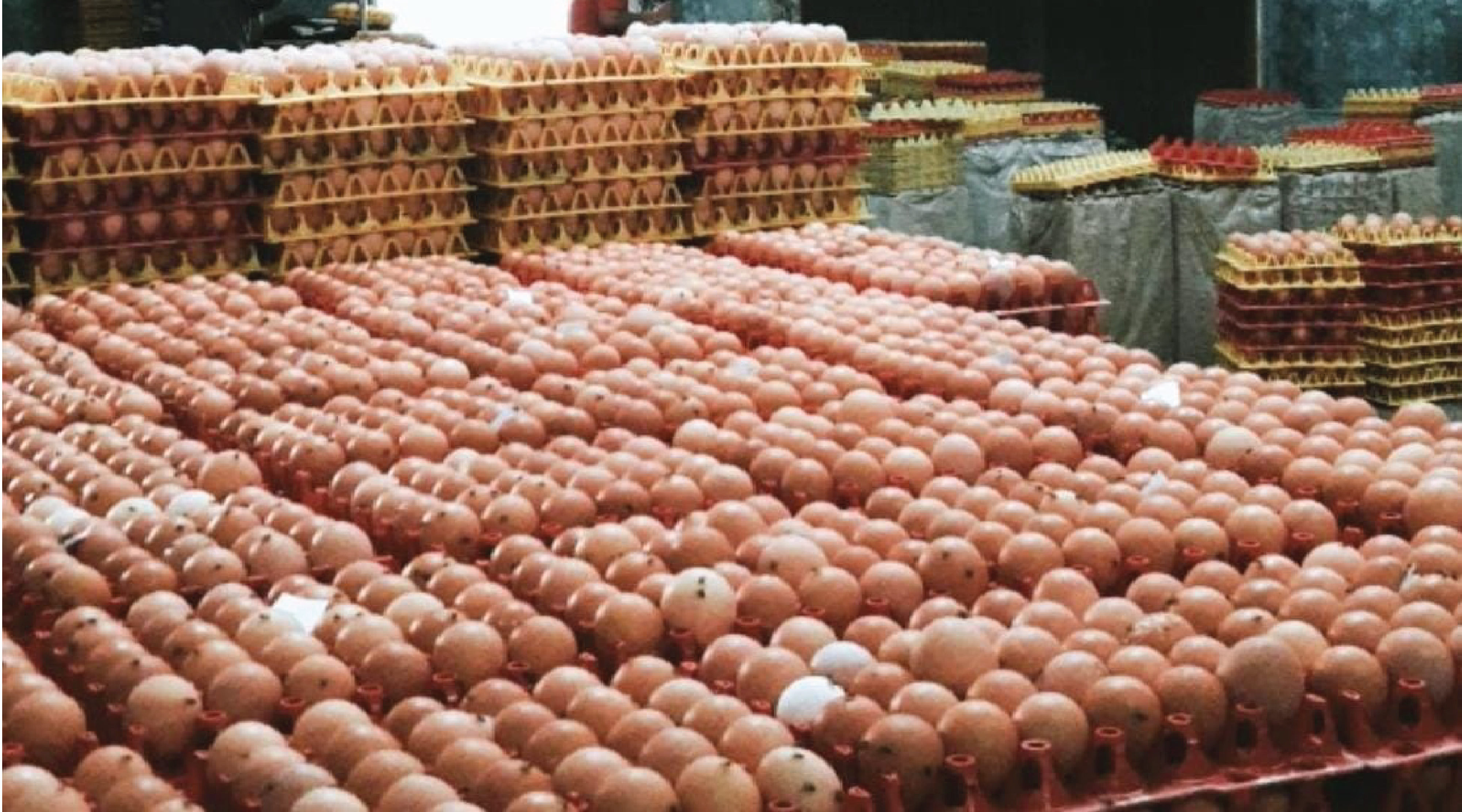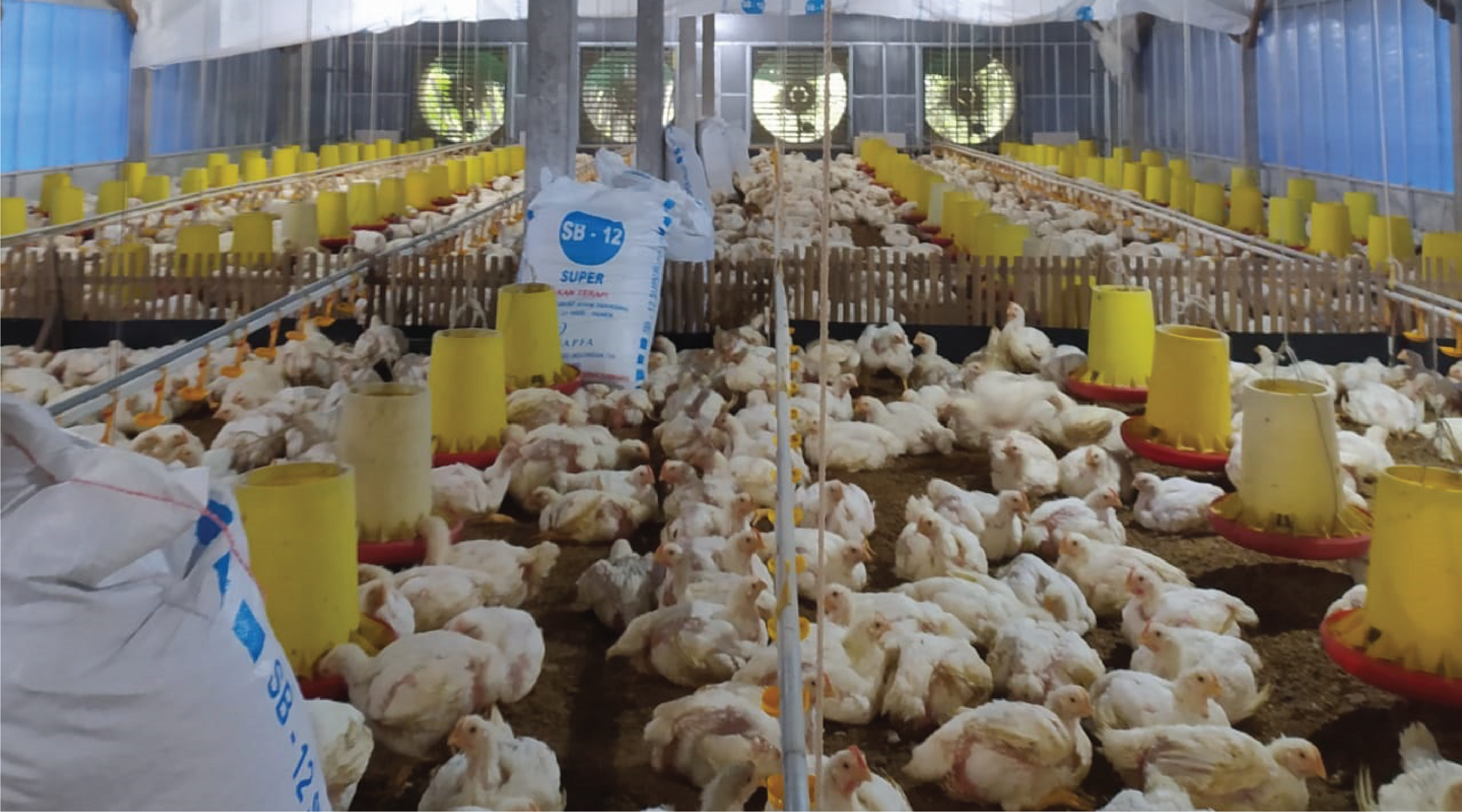Quality Improvement of Chicken Meat Treated with Neutral Electrolyzed Water

Downloads
Background: Chicken meat during processing may be exposed to bacterial contamination through several different ways. Electrolyzed water, as a new sanitizer, has gained popularity in food industry among many countries in recent years. The usage of electrolyzed water is a prospective, green conception and has several characteristics over conventional cleaning procedures which are safe for human beings and the environment. Purpose: This study was aimed to determine the sensory and bacteriological quality of chicken carcasses treated with different types of electrolyzed water. Method: Thirty-seven freshly slaughtered broiler chicken carcasses were completely immersed in clean container containing distilled water and electrolyzed water for 40 minutes, then sensory evaluated. For bacteriological analysis, chicken carcasses were divided into three groups, one for control, another group (Group I and II) and the chicken meat samples treated by immersion in neutral electrolyzed water for 20 and 40 minutes, respectively. Results: The mean value of colour scores of treated chicken carcasses was 4.9, 2.8, 4.5 and 3.7, for odour scores of treated chicken carcasses was 4.8, 2.6, 4.6 and 3.4, for general appearance scores of treated chicken carcasses was 4.9, 3.6, 4.6 and 3.9 for control, acidic, neutral and alkaline electrolyzed water, respectively. The bacteriological quality of treated chicken meat with neutral electrolyzed water was assessed. The mean values of aerobic plate counts for control, after treatment for 20 and 40 minutes were 5.40, 3.90 and 3.71 Log10 cfu/g, for enterobacteriacea were 3.63, 2.69 and 2.59 Log10 cfu/g, for Staphylococcus aureus were 2.99, 2.57 and 2.22 Log10 cfu/g, for Escherichia coli were 2.93, 2.18 and 1.94 Log10 cfu/g, respectively. Conclusion: The results indicated immersion of chicken carcasses for 20 minutes in neutral electrolyzed water improved their bacteriological quality without adverse effect on sensory quality.
Aider, M., Gnatko, E., Benali, M., Plutakhin, G., Kastyuchik, A., 2012. Electro-Activated Aqueous Solutions: Theory and Application in the Food Industry and Biotechnology. Innovative Food Science and Emerging Technologies, 15(1), 38-49.
Choi, J., Kong, B., Bowker, B.C., Zhuang, H., Kim, W. K., 2023. Nutritional Strategies to Improve Meat Quality and Composition in the Challenging Conditions of Broiler Production: A Review. Animals, 13(8), 1386.
Duan, D., Wang, H., Xue, S., Li, M., Xu, X., 2017. Application of Disinfectant Sprays After Chilling to Reduce The Initial Microbial Load and Extend The Shelf-Life of Chilled Chicken Carcasses. Food Control, 75(1), 70-77.
González‐Fandos, E., Herrera, B., Maya, N., 2009. Efficacy of Citric Acid Against Listeria monocytogenes Attached to Poultry Skin During Refrigerated Storage. International Journal of Food Science and Technology, 44(2), 262-268.
Han, D., Hung, Y.C., Bratcher, C.L., Monu, E.A., Wang, Y., Wang, L., 2018. Formation of Sublethally Injured Yersinia enterocolitica, Escherichia coli O157: H7, and Salmonella enterica serovar enteritidis Cells After Neutral Eectrolyzed Oxidizing Water Treatments. Applied and Environmental Microbiology, 84(17), e01066-18.
Hernández-Pimentel, V., Regalado-González, C., Nava-Morales, G., Meas-Vong, Y., Castañeda-Serrano, M., García-Almendárez, B., 2020. Effect of Neutral EW as Antimicrobial Intervention Treatment of Chicken Meat and on Trihalomethanes Formation. Journal of Applied Poultry Research, 29(3), 622-635.
International Organization for Standardization (ISO)., 2001. Microbiology of Food and Animal Feeding Stuffs-Horizontal Method for the Enumeration of Beta-Glucuronidase-Positive Escherichia coli—Part 2 Colony-Count Technique at 44°C Using bromo-4- chloro-3-indolyl beta-D-glucuronide, ISO 16649-2: 2001. Geneva, Switzerland: International Organization for Standardization.
International Organization for Standardization (ISO)., 2013. Microbiology of the Food Chain- Horizontal Method for the Enumeration of Microorganisms. Part 1: Colony Count at 30 °C by the Pour Plate Technique. Amendment 1: Clarification of Scope (ISO 4833-1: 2013/Amd 1:2022). Geneva, Switzerland: International Organization for Standardization.
International Organization for Standardization (ISO)., 2017. Microbiology of the Food Chain- Horizontal Method for the Detection and Enumeration of Enterobacteriaceae. (ISO 21528-2:2017).Geneva, Switzerland: International Organization for Standardization.
International Organization for Standardization (ISO)., 2020. Microbiology of the Food Chain- Horizontal Method for The Detection, Enumeration and Serotyping of Salmonella - Part 1: Detection of Salmonella spp.- Amendment 1: Broader range of incubation temperatures, amendment to the status of Annex D, and correction of the composition of MSRV and SC. ISO 6579-1:2017/Amd1:2020. Geneva, Switzerland: International Organization for Standardization.
International Organization for Standardization (ISO)., 2023. Microbiology of the Food Chain-Horizontal Method for the Enumeration of Coagulase PositiveStaphylococci (Staphylococcus aureus and other species) (ISO 6888-1:2021/Amd1:2023).Part 1: Method using Baird Parker Agar Medium-Amendment 1. Geneva, Switzerland: International Organization for Standardization.
Khalid, N.I., Sulaiman, S., Ab Aziz, N., Taip, F.S., Sobri, S., Nor-Khaizura, M.A.R., 2018. EW As a Green Cleaner: Chemical and Physical Characterization at Different Electrolysing Parameters. Food Research, 2(6), 512- 519.
Kong, D., Quan, C., Xi, Q., Han, R., Koseki, S., Li, P., Du, Q., Yang, Y., Forghani, F. Wang, J., 2022. Study on The Quality and Myofibrillar Protein Structure of Chicken Breasts During Thawing of Ultrasound-Assisted Slightly Acidic EW (SAEW). Ultrasonics Sonochemistry, 88, 106105.
Rosario-Pérez, P.J., Rodríguez-Sollano, H.E., Ramírez-Orejel, J.C., Severiano-Pérez, P., Cano- Buendía, J.A., 2023. Neutral EW in Chicken Breast-A Preservative Option in Poultry Industry. Foods, 12(10), 1970.
Rouger, A., Remenant, B., Prévost, H., Zagorec, M., 2017. A Method to Isolate Bacterial Communities and Characterize Ecosystems From Food Products: Validation and Utilization in As a Reproducible Chicken Meat Model. International Journal of Food Microbiology, 247, 38-47.
Shimamura, Y., Shinke, M., Hiraishi, M., Tsuchiya, Y., Masuda, S., 2016. The Application of Alkaline and Acidic EW in The Sterilization of Chicken Breasts and Beef Liver. Food Science and Nutrition, 4(3), 431-440.
Sousa, C.P.D., 2008. The Impact of Food Manufacturing Practices on Food Borne Diseases. Brazilian Archives of Biology and Technology, 51, 615-623.
Szczesniak, A.S., 1987. Correlating Sensory with Instrumental Texture Measurements-an Overview of Recent Developments 1. Journal of Texture Studies, 18(1), 1-15.
Takeda, Y., Uchiumi, H., Matsuda, S., Ogawa, H., 2020. Acidic EW Potently Inactivates SARS CoV-2 Depending on The Amount of Free Available Chlorine Contacting with the Virus. Biochemical and Biophysical Research Communications, 530(1), 1-3.
Wang, F., Lin, Y.N., Xu, Y., Ba, Y.B., Zhang, Z.H., Zhao, L., Lam, W., Guan, F.L., Zhao, Y., Xu, C.H., 2023. Mechanisms of acidic EW killing bacteria. Food Control, 147, 109609.
Wang, H., Qi, J., Duan, D., Dong, Y., Xu, X., Zhou, G., 2018. Combination of A Novel Designed Spray Cabinet and EW to Reduce Microorganisms on Chicken Carcasses. Food Control, 86(1), 200–206.
Yan, P., Daliri, E.B., Oh, D.H., 2021. New Clinical Applications of EW: A Review. Microorganisms, 9(1), 136.
Copyright (c) 2025 Authors

This work is licensed under a Creative Commons Attribution-ShareAlike 4.0 International License.
- The journal allows the author to hold the copyright of the article without restrictions.
- The journal allows the author(s) to retain publishing rights without restrictions.
- The legal formal aspect of journal publication accessibility refers to Creative Commons Attribution Share-Alike (CC BY-SA).

Journal of Applied Veterinary Science and Technology is licensed under a Creative Commons Attribution-ShareAlike 4.0 International License





























